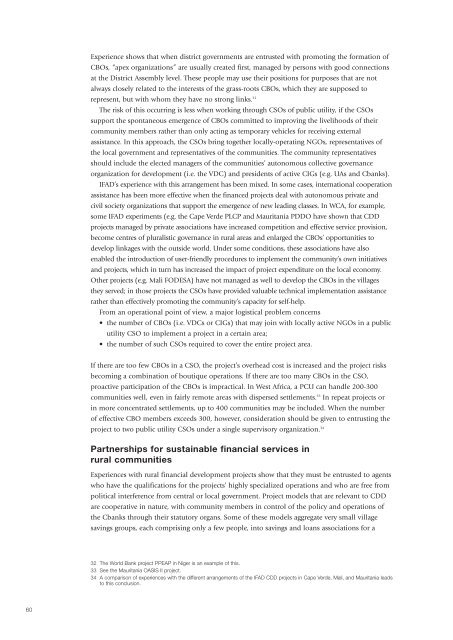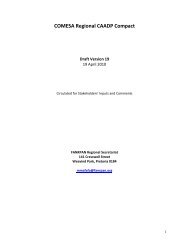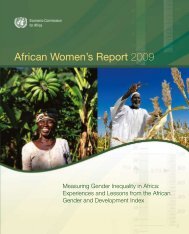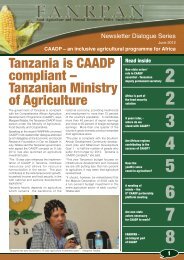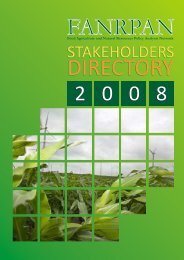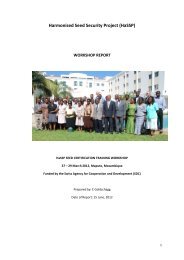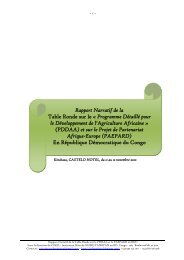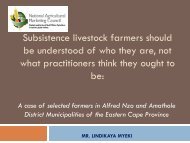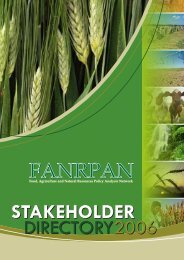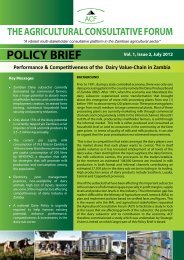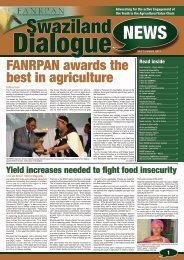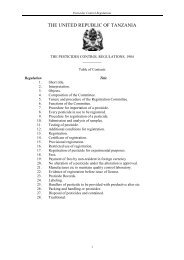Community-driven development decision tools for rural - IFAD
Community-driven development decision tools for rural - IFAD
Community-driven development decision tools for rural - IFAD
- No tags were found...
Create successful ePaper yourself
Turn your PDF publications into a flip-book with our unique Google optimized e-Paper software.
Experience shows that when district governments are entrusted with promoting the <strong>for</strong>mation ofCBOs, “apex organizations” are usually created first, managed by persons with good connectionsat the District Assembly level. These people may use their positions <strong>for</strong> purposes that are notalways closely related to the interests of the grass-roots CBOs, which they are supposed torepresent, but with whom they have no strong links. 32The risk of this occurring is less when working through CSOs of public utility, if the CSOssupport the spontaneous emergence of CBOs committed to improving the livelihoods of theircommunity members rather than only acting as temporary vehicles <strong>for</strong> receiving externalassistance. In this approach, the CSOs bring together locally-operating NGOs, representatives ofthe local government and representatives of the communities. The community representativesshould include the elected managers of the communities’ autonomous collective governanceorganization <strong>for</strong> <strong>development</strong> (i.e. the VDC) and presidents of active CIGs (e.g. UAs and Cbanks).<strong>IFAD</strong>’s experience with this arrangement has been mixed. In some cases, international cooperationassistance has been more effective when the financed projects deal with autonomous private andcivil society organizations that support the emergence of new leading classes. In WCA, <strong>for</strong> example,some <strong>IFAD</strong> experiments (e.g. the Cape Verde PLCP and Mauritania PDDO have shown that CDDprojects managed by private associations have increased competition and effective service provision,become centres of pluralistic governance in <strong>rural</strong> areas and enlarged the CBOs’ opportunities todevelop linkages with the outside world. Under some conditions, these associations have alsoenabled the introduction of user-friendly procedures to implement the community’s own initiativesand projects, which in turn has increased the impact of project expenditure on the local economy.Other projects (e.g. Mali FODESA) have not managed as well to develop the CBOs in the villagesthey served; in those projects the CSOs have provided valuable technical implementation assistancerather than effectively promoting the community’s capacity <strong>for</strong> self-help.From an operational point of view, a major logistical problem concerns• the number of CBOs (i.e. VDCs or CIGs) that may join with locally active NGOs in a publicutility CSO to implement a project in a certain area;• the number of such CSOs required to cover the entire project area.If there are too few CBOs in a CSO, the project’s overhead cost is increased and the project risksbecoming a combination of boutique operations. If there are too many CBOs in the CSO,proactive participation of the CBOs is impractical. In West Africa, a PCU can handle 200-300communities well, even in fairly remote areas with dispersed settlements. 33 In repeat projects orin more concentrated settlements, up to 400 communities may be included. When the numberof effective CBO members exceeds 300, however, consideration should be given to entrusting theproject to two public utility CSOs under a single supervisory organization. 34Partnerships <strong>for</strong> sustainable financial services in<strong>rural</strong> communitiesExperiences with <strong>rural</strong> financial <strong>development</strong> projects show that they must be entrusted to agentswho have the qualifications <strong>for</strong> the projects’ highly specialized operations and who are free frompolitical interference from central or local government. Project models that are relevant to CDDare cooperative in nature, with community members in control of the policy and operations ofthe Cbanks through their statutory organs. Some of these models aggregate very small villagesavings groups, each comprising only a few people, into savings and loans associations <strong>for</strong> a32 The World Bank project PPEAP in Niger is an example of this.33 See the Mauritania OASIS II project.34 A comparison of experiences with the different arrangements of the <strong>IFAD</strong> CDD projects in Cape Verde, Mali, and Mauritania leadsto this conclusion.60


